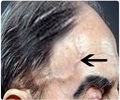A
study published in the European Journal
of Cardiothoracic Surgery indicates that severe aortic stenosis can be
treated surgically at the same time as highly significant coronary artery
disease.
What is Aortic Stenosis?
Aortic stenosis is a condition where the valve at the junction of the left ventricle and the aorta, the largest blood vessel of the body, is narrowed. This results in a reduction in blood flow to different parts of the body. In some cases, the condition is present from birth, while in others; it may be due to conditions like rheumatic fever. Symptomatic cases are treated with valve replacement.What is Coronary Heart Disease?
Coronary heart disease is a condition that where there is reduced blood supply to a part of the heart. A severe block in the arteries supplying the heart muscle can result in a heart attack. Angioplasty is a commonly performed procedure for the treatment of this condition.Researchers have observed that several patients with severe aortic stenosis also have coronary artery disease. A study evaluated if the treatment of both the conditions at the same time is safe and effective.
The study population included 593 patients who were divided into 3 groups:
- Group I included patients who had aortic stenosis but no coronary artery disease. These patients underwent only transcatheter aortic valve implantation (TAVI) for the treatment of the stenosis.
- Group II included patients who had aortic stenosis and coronary artery disease but no highly significant lesion in the coronary arteries; these individuals were also treated only with transcatheter aortic valve implantation (TAVI).
- Group III included patients who had aortic stenosis and highly significant coronary artery lesions; these patients underwent both procedures transcatheter aortic valve implantation (TAVI) for aortic stenosis and percutaneous coronary intervention (PCI) for coronary artery disease at the same sitting.
The researchers thus concluded that doing both the above procedures - transcatheter aortic valve implantation (TAVI) and percutaneous coronary intervention (PCI) in patients with severe aortic stenosis and highly significant coronary artery disease – at the same time is safe and feasible.
Cardiovascular Disease Statistics
- Cardiovascular diseases are the main cause of death worldwide.
- Over 80% of the deaths due to cardiovascular disease occur in low or middle-income countries.
- Coronary artery disease is the most common heart disease in the United States.
- Around 720,000 Americans suffer from a heart attack every year.
- About half of Americans have at least one of the three major risk factors for heart disease, which are high blood pressure, high LDL cholesterol and smoking.
- In India, cardiovascular diseases are the largest cause of mortality. There are however regional differences in cardiovascular mortality, with the mortality being highest in the south Indian, eastern and north-eastern states and Punjab.











